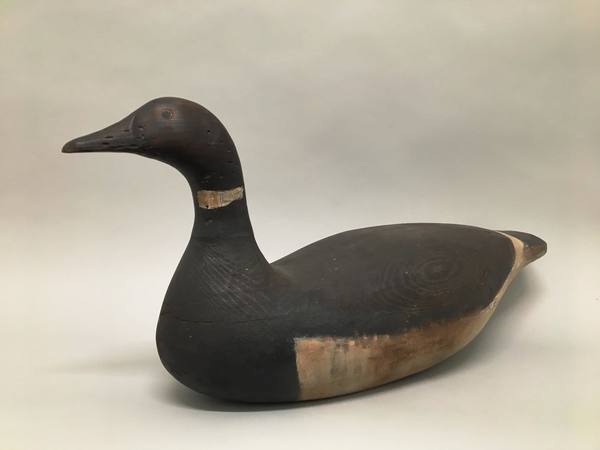William H. Dalziel
American, 1925 - 2018
Born in 1925, William Dalziel was raised in the northern Chicago industrial city of
Waukegan, IL. During WWII in June of 1943, William Dalziel, then 18, attempted
to enlist in the U.S. Army. At a height of only 4 feet 10 1/2 inches and weighing
105 pounds, Dalziel was rejected due to his small stature. Five months later, still
eager to serve and having grown an inch in height, Dalziel returned to his draft
board in October of 1943 and was commissioned into the U.S. Army Air Corps.
His tenacity to serve the nation and his particular size caught the attention of the national press and a newspaper article was published across the country showing young Dalziel photographed hanging from a bar to stretch himself before the officers of his draft board. To the Army Air Corps, his determination and size was an ideal fit to serve as a ball turret gunner in a Boeing B-17 “Flying Fortress”. Dalziel served his country with distinction, and became an ace gunner in 308th Army Air Bombardment Division.
Daziel's war-time experiences as a B-17 ball turret gunner greatly impacted his life and artwork. His position was one of the most dangerous assignments of WWII; the life expectancy of a ball turret gunner was typically only 15 missions. Dalziel survived over 25 missions, and became a member of the renowned “Lucky Bastard Club”, an unofficial but highly esteemed award conveyed by fellow airmen to those who survived and excelled in their tours of duty. Dalziel kept this award together with his Army dog tags throughout the rest of his life in his studio.
After World War II, William Dalziel returned to Chicago to become an artist. He began his studies in 1948 at the University of Illinois, Chicago and received both his undergraduate degree and, in 1963, his Masters Degree of Fine Art (MFA) from the School of the Art Institute of Chicago (SAIC), winning honors. In June 1963, the Art Institute of Chicago selected one of Dalziel's paintings for exhibition at the Sixty-sixth Annual Exhibition of Artists of Chicago and Vicinity.
It was at the SAIC where William Dalziel met his wife, fellow artist and lifelong companion, Elizabeth Connolly. For over forty years, Elizabeth managed one of the most highly regarded framing stores in Chicago’s bustling art community, Seaberg Picture Frame, Inc., longtime an insider’s source for artists, dealers, museum curators and collectors alike.
In 1967, William Dalziel was awarded a Foreign Traveling Fellowship at the Art Institute of Chicago. In April of that year Dalziel and his wife Elizabeth flew from New York to the central African country of Cameroon. The couple traveled throughout Africa during a time of turbulent political change on the continent, and they spent a year extensively driving, trekking and camping through Uganda, Tanzania, Nigeria, Kenya, Democratic Republic of Congo and Ghana to study the art and culture of each country. The couple returned to Chicago in April of 1968.
After receiving his Master’s Degree at the SAIC, Dalziel became an art teacher in Chicago from 1964-1965, working at a public school in a gritty neighborhood in the city’s West Side. After an incident where a desk was thrown out of a second story window, nearly crashing on top of him, Dalziel resigned from this position and dedicated his life solely to painting.
William and Elizabeth owned a secluded bit of property in rural central Wisconsin, which served as a special retreat for the artist. Dalziel was an avid observer of the natural world and a longtime bird watcher. As a determined birder, he kept careful notes, lists and sketches of migrating birds in the region. He was devoted tinkerer, engineer and wood worker and his studio space boasted numerous odd contraptions and devices. Later in life, Dalziel frequently carved and painted whimsical sculptures of native birds and fishes.
Dalziel’s quiet, introspective paintings offer a suspension of time, and there is a Zen-like tranquility to his compositions. His painting technique flows in a consistent arc dating from the early 1960s through the late 1970s. Dalziel wrote in his journal of aiming for a “spacious calm” in his artwork, representing the “mingling of restlessness and tranquility [which] occurs in man’s own life” He maintained “shapes of colors are symbols for conveying man’s struggle for individuality and his enveloping moods of serenity.”
In a statement of artistic purpose Dalziel described his work as a “Construction of forms that seem to lunge or collide. Dark forms interlock with solid white spaces in a time equilibrium –- sometimes suggestive of familiar images of life.”
His artwork, typically abstract in nature, is executed with a limited range of color but with a great depth of scope. His tranquil compositions appear reminiscent of the broad aerial views the artist would have observed aloft from his flights in a B- 17 bomber. Upon a discerning look, viewers may recognize elements of reality, such as the patchwork of fields and rooftops seen from above. Outlines of aircraft fuselage may be interspersed with abstracted figural sketches and fragmented numerical equations. In one of his journals Dalziel wrote ”To represent these forces with shapes that have feeling. Not a decorative arrangement of meaningless shapes, but shapes that are vital and so alive that they project themselves with meaning.”
To Dalziel, painting was a private and internal endeavor. After the mid-1960s, he did not publicly show his artwork. Thus, his creative process was unhurried by the constraints of a common work day, and undue pressures brought on by commercial representation, deadlines or public exhibition. The process was his own, very much art for art’s sake.
Dalziel died in Chicago in 2018 at the age of 92.
14-119 Merchandise Mart Plaza
Chicago, Illinois 60654
(312) 644-8855
info@richardnortongallery.com
Gallery Hours
Monday through Friday
9 am to 5 pm
©2025 Richard Norton Gallery LLC

